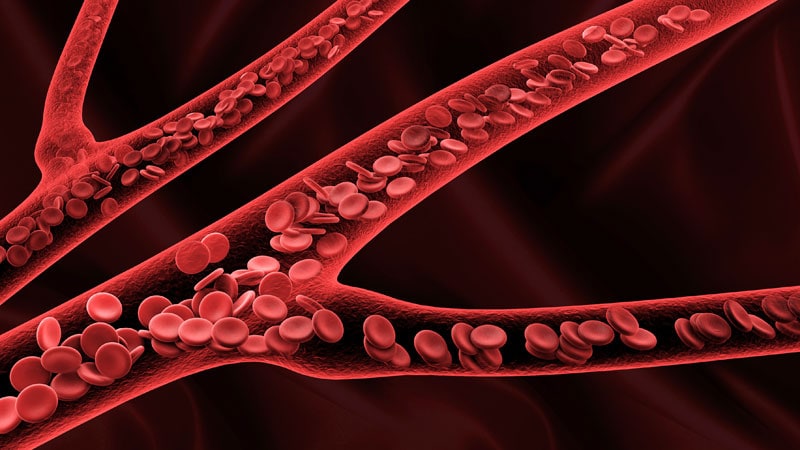Arteriosclerosis is a very good predictor of the future Type 2 diabetes, Regardless of blood pressure. However, patients with stiff arteries and high blood pressure are at greatest risk of diabetes. Investigation Of more than 11,000 people in China.
For Xue Tian, MD, the author of the study and a member of the Department of Neurology at Beijing Tentan Hospital in China, the study reveals new options for diabetes prevention. “Identifying people at high risk of developing diabetes is clinically important because early intervention can prevent the onset of the disease and slow its progression,” the author writes. High blood pressure..
“Amazing” discovery
Previous studies have shown that hypertension is a risk factor for type 2 diabetes. “It was initially surprising that arteriosclerosis was a very good predictor of type 2 diabetes,” said Dr. Peter Schwartz, MD, the first chair of the German Diabetes Foundation’s Working Group on Prevention. “But type 2 diabetes often precedes for years. Insulin resistance – When Insulin Is a very strong growth factor and also promotes the formation of plaques in atherosclerosis. “
In the current study, researchers analyzed data from 11,156 participants in the KaiLuan study. Since 2006, this prospective study has monitored more than 100,000 employees of the coal and chemical company Kai Luan in Tangshan, China. Blood pressure and fasting blood glucose are measured every two years. Since 2010, pulse wave velocity has also been measured. It provides an indicator of arteriosclerosis.
Dangerous combination
By 2017, after a median of 6 years, about 7% of study participants developed type 2 diabetes. People with increased arteriosclerosis and high blood pressure were at greatest risk of developing type 2 diabetes. Their risk of diabetes was 142% higher than that of people with ideal vascular function: no hypertension and normal arteriosclerosis.
However, even study participants with normal blood pressure had an 111% increased risk of type 2 diabetes if their arteries were stiffer than those with ideal vascular function.
Participants with high blood pressure and normal arteriosclerosis had the lowest increased risk of diabetes, at 48%.
However, among study participants with normal blood pressure but stiff arteries, the risk of type 2 diabetes was 111% higher than that of participants with ideal vascular function.
The minimum increase in diabetes risk was 48%, between participants with hypertension and normal arteriosclerosis.
“New insight”
“It was amazing that people with increased arteriosclerosis are more likely to develop type 2 diabetes with or without high blood pressure,” said Dr. Anxin Wang, also a senior author at Beijing Tentan Hospital. I am. “This is strong evidence that arteriosclerosis is a better predictor of type 2 diabetes than hypertension.”
For Schwartz, who heads the preventive clinical department at Dresden University Hospital, this finding has a logical explanation. “Unlike arteriosclerosis, high blood pressure can have many causes, but it may not necessarily be related to insulin resistance,” he said. Medscape Medical News. “In the presence of hypertension and insulin resistance, this leads to increased arteriosclerosis and increased predictive effect.”
Based on these results, the authors of the current study conclude that simultaneous treatment of hypertension and arteriosclerosis can help reduce the risk of diabetes. The fact that arteriosclerosis has proven to be a better predictor of type 2 diabetes than blood pressure also provides “new insights into future strategies for preventing diabetes.”
Uncertain clinical relevance
However, Schwartz wonders if measuring arteriosclerosis can help prevent diabetes in clinical practice. “On the one hand, no one is practicing structured diabetes prevention in our healthcare system. On the other hand, it is an expensive procedure performed only by certain specialists.”
Schwarz expressed his hope that Germany’s diabetes prevention will be improved through the use of digital health applications. He “can provide patients with apps that help them practice prevention.” However, measuring pulse wave velocity is not an ideal parameter. “Determining insulin resistance is much easier and it costs only € 5.”
Illuminate pathophysiology
Despite this observation, Schwartz emphasized that the study from China was “a very important study.” Although it may not have a direct impact on clinical practice, it has a significant impact on the pathophysiological understanding of the disease and its metabolic risk factors. This is because “arteriosclerosis is a completely logical link in the pathophysiology of type 2 diabetes, but it has not received much attention so far.”
This article is Translated From the German version of Medscape.




